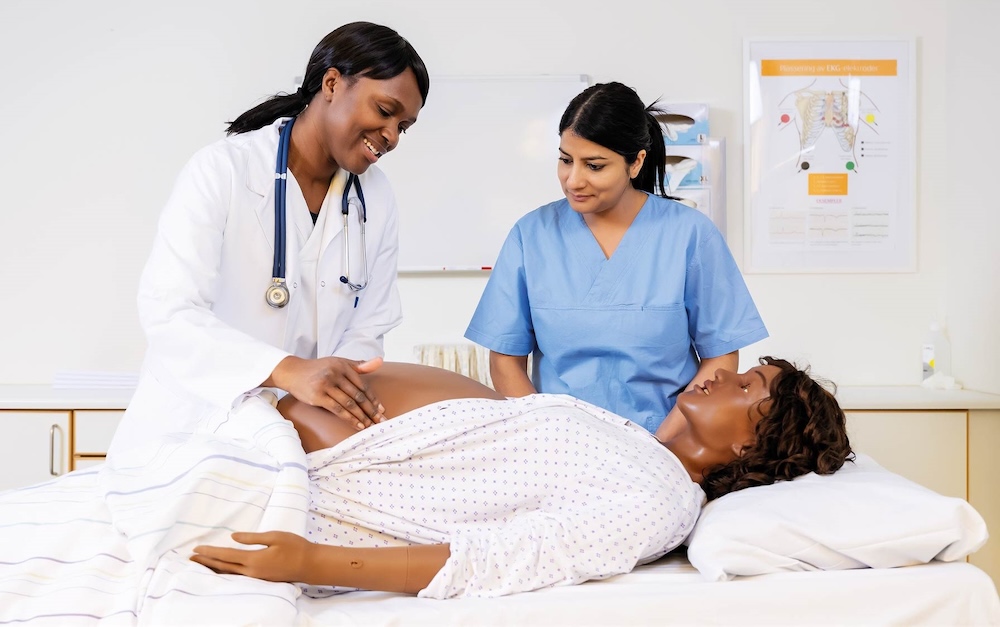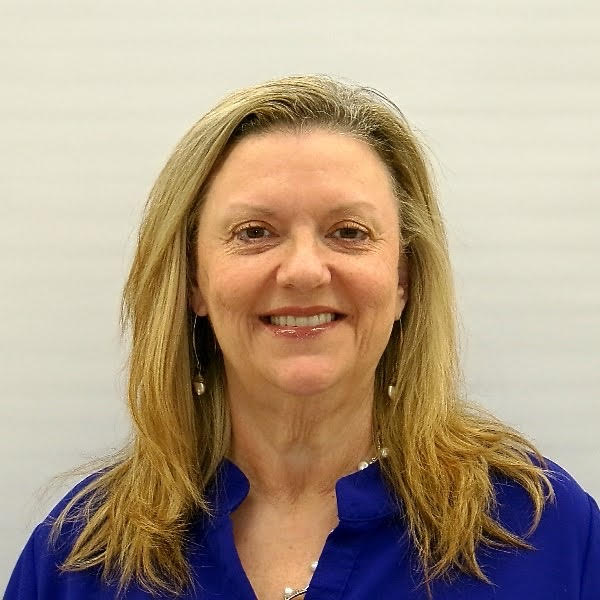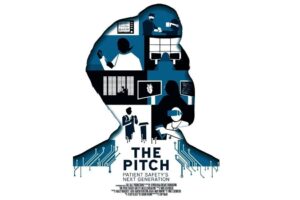Laerdal Advancing Maternal Safety Through Clinical Simulation with MamaAnne
Laerdal released MamaAnne, a maternal healthcare simulator, in 2024 to provide high-quality healthcare training to address the increasing maternal mortality rates. According to the World Health Organization (WHO), maternal deaths occur nearly every two minutes, which results in over a quarter million mothers dying a year. Maternal mortality rates are on the rise, especially in the Americas and Europe when considering racial disparities. Four out of five pregnancy-related deaths are preventable. MamaAnne offers healthcare professional learners the opportunity to practice obstetric events to improve maternal outcomes. This HealthySimulation.com article by Teresa Gore, PhD, DNP, APRN, FNP-BC, CHSE-A, FSSH, FAAN will delve into Laerdal’s MamaAnne and the impact on maternal survival rates and better patient outcomes through healthcare simulation. Special Webinar Opportunity: Watch HealthySimulation.com’s hosted recorded webinar Elevate Your Healthcare Simulation Impact with Laerdal’s Latest Innovations to learn more about MamaAnne!
Increasing Maternal Mortality Rates
The U.S. maternal mortality rate is accelerating at an alarming rate, reports a new study from Northwestern Medicine which reveals maternal mortality increased among every age group. The greatest relative increases occur in women aged 25 to 29 and 30 to 34 years old. Between 2014 and 2021, the average U.S. maternal age, a risk factor for maternal mortality, increased from 28.3 to 29.4 years old. During this same period, the overall maternal mortality rates in the U.S. nearly doubled, from 16.5 to 31.8, with the largest increase of 18.9 to 31.8 occurring from 2019 to 2021.
Sponsored Content:
“A commonly held hypothesis is that more pregnancy-related deaths are occurring because more people are having children later in life, so we wanted to investigate this question. However, we found that’s not why we’re seeing a spike in the number of maternal deaths,” said corresponding author Dr. Sadiya Khan, Magerstadt Professor of Cardiovascular Epidemiology and associate professor of cardiology at Northwestern University Feinberg School of Medicine. “Older maternal age is an important risk factor in maternal mortality, but our findings highlight the need to learn what else is causing these rates to accelerate in more recent years, especially in younger adults less than 35 years old. We’re going in the wrong direction.”
MamaAnne – Adequate Simulation Training is the Solution
Many of the maternal fatalities are preventable. MamaAnne is a solution for clinical educators and learners to practice focused and efficient training to reduce the occurrence of adverse obstetric events. High-fidelity clinical simulation builds confidence and competence when facing critical, obstetric emergencies. MamaAnne, the maternal and birthing simulator, provides the platform for obstetric training through simplified configuration for rapid use and setup, a reinvented automatic delivery system, and flexible solutions to adapt the scenario and meet competency requirements for evidence-based practice and better maternal outcomes.
Sponsored Content:

View the LEARN CE/CME Platform Webinar Elevate Your Healthcare Simulation Impact with Laerdal’s Latest Innovations to learn more!
Rapid Setup for MamaAnne
High-fidelity birth simulators are often under-utilized because of technical challenges, lack of intuitive operation, and difficult setup. MamaAnne offers effortless prep and quick transitions between sessions. MamaAnne’s belly-latch system, accessible fluid reservoirs, limb connectors, and the Automatic Delivery System (ADS) loading mechanism enhance speed and reduce the stress of running back-to-back simulations or exceeding allotted time in-situ scenarios.
MamaAnne Offers Realistic Experiences
The Automatic Delivery System (ADS) facilitates precise and accurate birth movements through the birthing canal. MamaAnne offers immersive labor and delivery simulation with realistic experiential learning opportunities. Realistic silicone skin enhances look and feel while articulating joints improve birthing positions such as supine, semi-recumbent, left lateral, lithotomy, all-fours and sitting. Suprapubic pressure sensors provide feedback to improve shoulder dystocia competencies.
Modular Options with MamaAnne
MamaAnne allows clinical educators the ability to run their scenarios their way. The modular components are a foundational pillar of MamaAnne’s design. Modular options allow for flexible bleeding solutions and interchangeable modules. An example of MamaAnne’s flexibility is with the Post-Partum Hemorrhage (PPH) scenario options. The PPH clinical simulation scenarios can be simulated using different methods:
- Internal bleeding uterus for high-fidelity scenarios requiring real fluids.
- Clean bleed mat for a seamless transition from birth to bleeding and quick clean-up.
- 1.5L internal and 5.0L external blood tanks to meet volume requirements or run simultaneous PPH scenarios without refilling.
MamaAnnes Improves Diversity Application
MamaAnne’s realism offers healthcare professionals the opportunity to incorporate the notion of inclusivity in their training and in turn create an impact on patient care within maternal health.
“MamaAnne will be a game changer for many simulation centers, allowing the mother to have a birth and continue into a PPH case without leaving the scenario or resetting. Providing this option will enable more realistic training opportunities for institutions to meet their end users’ needs better.” Jeffrey Stout – Texas A&M CLRC
Incorporating Maternal Simulation Into a Healthcare System
“(Our) staff finds simulation (training) to be very beneficial, as it provides a significant amount of education, practice, and discussion,” says Jean Meier, the Women’s Health & Birth Center Manager at Westfields Hospital in New Richmond, Wisconsin.
How does simulation prepare each team member? Quite simply, through familiarization. Being put into a high-fidelity situation allows for trial and error in a safe and encouraging environment. But it goes further, as Meier explains. “Simulation has allowed us to go through the steps outlined in our workflows and policies as well as utilize our order sets.” And, at the conclusion of the simulation, there is an opportunity to follow up with each other. “Everyone is involved, and everyone is learning,” Meier shares. “Following the simulation, we discuss it. What went well? What could we have done differently? What challenges came up? This discussion has provided a tremendous amount of insight and learnings.”
From there, individual learning can progress further. Members are encouraged to ask questions and plan for different outcomes or variables. A sense of analysis ultimately contributes to the entire team’s improvement. The post-simulation reflection “allows staff to utilize critical thinking skills, looking ahead and anticipating,” says Meier.
Through simulation, healthcare teams were able to practice how to quickly recognize post-partum hemorrhage, perform their roles quickly, respond appropriately, and ultimately contribute to positive patient outcomes of high-risk maternal case survival.
More About Laerdal
Laerdal, a Norwegian-based company, continues to be a pioneer in the industry of medical simulation. Almost every year Laerdal Medical Corporation unveils a new technology that will forever change the face of healthcare simulation. Along with SimMan Critical Care, Laerdal introduced MamaAnne, a birthing simulation, in 2024. Some of Laerdal’s other innovative products have been the SimMan 3G, SimMan ALS, SimBaby, Nursing Anne Simulator, SimPad and Resusci Anne QCPR. Laerdal ensures their product interfaces are intuitive and user-friendly all while providing the maximum in durability and quality.
Learn More About MamaAnne to Improve Maternal Outcomes!
Teresa Gore, PhD, DNP, APRN, FNP-BC, CHSE-A, FSSH, FAAN – Dr. Gore has experience in educating future nurses in the undergraduate and graduate nursing programs. Dr. Gore has a PhD in Adult Education, a DNP as a family nurse practitioner, and a certificate in Simulation Education. Dr. Gore is an innovative, compassionate educator and an expert in the field of healthcare simulation. In 2007l Teresa started her journey in healthcare simulation. She is involved in INACSL and SSH. She is a Past-President of INACSL and is a Certified Healthcare Simulation Educator Advanced (CHSE-A). In 2018, she was inducted as a Fellow in the American Academy of Nursing (FAAN). In 2021, she was inducted as a Fellow in the Society of Simulation in Healthcare Academy (FSSH) and selected as a Visionary Leader University of Alabama at Birmingham School of Nursing Alumni. During her career, Dr. Gore has led in the development and integration of simulation into all undergraduate clinical courses and started an OSCE program for APRN students. Her research interests and scholarly work focus on simulation, online course development and faculty development. She has numerous invited presentations nationally and internationally on simulation topics.
Sponsored Content:















